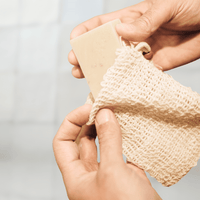Have you ever heard someone talking about surfactants in shampoo and wondered what it means? Surfactants have become more buzzword-worthy in recent years, but the reality is, they’ve been around for as long as shampoo has (longer, in fact!).
Surfactants are substances that reduce the surface tension of a liquid in which they are dissolved. This enables the liquid to spread and break down oil, making them great cleansers. Surfactants can act as emulsifiers, foaming or wetting agents, detergents, and more.
Due to these properties, surfactants are common in shampoos. In fact, all shampoos have surfactants! These compounds help cleanse hair, but are also used in many other familiar household products: soaps, cosmetics, toothpaste, sanitizers, detergents, and much more.
Let’s talk about what surfactants are and why we use them.
Why Are There Surfactants in My Shampoo?
As we already mentioned, all shampoos have surfactants – they’re the reason shampoos work to clean your scalp and hair. However, not all surfactants are the same! Some are much more harsh and stripping, and can lead to dry, irritated, or damaged hair and scalp.
Surfactants are in shampoos because they create the lather that helps clear out dirt, buildup, dead skin cells, and grime. In contrast to soap (which inherently has a high pH), surfactants allow us to create a product with a gentle, pH-balanced cleanse that is optimal for scalp health. There are several different kinds of surfactants, but anionic surfactants are the most common in shampoo.
What Surfactants Are Safe for Hair?
All surfactants help cleanse and remove excess oil, but some are stronger than others. These stronger surfactants can be too harsh on hair and strip your scalp of its natural oils, leaving it dry and irritated.
Sodium laureth sulfate and sodium lauryl sulfate (SLES/SLS) are popular in shampoos because they are very effective cleansing agents, but they are so effective that they can strip away much more than just dirt or oil, leaving your hair dry and damaged. Sulfates are not recommended for those with sensitive skin or eczema, curly or fine hair, or color-treated hair due to their stripping nature.
Sodium coco sulfate (SCS) is also popular, particularly in shampoo bars, and is a gentler surfactant. Because it is often derived from coconut or palm oil, many companies market it as safer and less harsh than SLS. In reality, SCS is a blend of fatty acids from coconut mixed with synthetic ingredients. This blend can still be quite harsh and stripping.
Sodium cocoyl isethionate (SCI) is a sodium salt that, when mixed with fatty acids derived from coconut oil, results in a gentle yet productive cleansing agent. We use SCI in our Shampoo Bars not just because it is gentler surfactant, but also because it is such an effective one. Sodium cocoyl isethionate is an emulsifier and helps to create the rich lather you know and love in our Shampoo Bars. It gently removes dirt and buildup while also hydrating the skin, making for a pleasant and nourishing wash experience.
What Is the Best Kind of Shampoo for Me?
Only you can decide what is best for your hair, and the best way to determine that is by trial and error. While sulfate surfactants may be okay for some people, many find them irritating and drying. Sulfates can in fact impair your skin barrier, leading to further irritation. They are also tested on animals and can harm aquatic wildlife.
Our Shampoo and Conditioner Bars are sulfate-surfactant free and safe for all hair types! They cleanse gently but effectively, leaving your hair clean and moisturized. Our Shampoo Bars are great for curly hair, color treated hair, dry hair, and more. Plus, they last for 50-75 washes and are completely plastic-free, making them an eco-friendly alternative to your typical sulfate shampoo in a plastic bottle.





